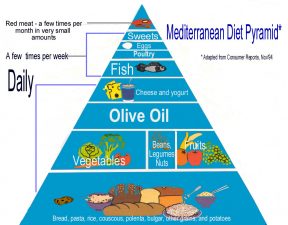 Rock salt, Redmond sea salt, table salt, pink Himalayan salt. How much salt is in your diet might be the more important question.
Rock salt, Redmond sea salt, table salt, pink Himalayan salt. How much salt is in your diet might be the more important question.
When it comes to taking care of our diet there are many aspects to consider. Most people are aware of the amount of sugar they eat, or fatty foods, but have you ever stopped to consider your salt intake? Eating too much salt is just as bad as eating too much sugar, the effect is different, but it can be just as harmful.
The smartypants at Harvard say too much sodium in the diet can lead to high blood pressure, heart disease, and stroke. It can also cause calcium losses, some of which may be pulled from bone. Most Americans consume at least 1.5 teaspoons of salt per day, or about 3400 mg of sodium, which contains far more than our bodies need.
The problem is that there are lots of foods out there with more salt in them than what you might think. Right now the argument is about microplastics and what kind of salt you should eat. Pink? Sea salt? Mined in America salt? We are saying, mind any kind of salt.
To begin with, a certain amount of salt is necessary in our diet. Salt is made up of sodium and chloride. Sodium is the mineral that regulates bodily fluids and blood as well as impacting nerve impulses and heart activity. All this means that a certain level of sodium is needed for our bodies to run smoothly. In summer, especially in the Middle East this year, the heat causes you to sweat meaning you lose a certain amount of sodium through your skin that needs to be replaced.
That amount of sodium needed differs between people, the recommended sodium intake ranges from 1500 mg to 2400 mg per day. At the higher end of this range, it equals approximately 1 teaspoon of salt each day. So now the question is, can you regulate your salt intake?
To start with, it is important to read the labels on packaged food. Many cereals, frozen foods, salad dressings and canned goods have a surprising amount of sodium. If you have a look on the packets there are tables which indicate how much sodium (chemically labeled Na) is in the food. Margarine for example, is risky for more than one reason, but its sodium content should be enough of a warning to stay away.
Of course with all this sodium, what you really need is to balance your diet. Try eating some low-sodium foods, like fresh fruit and vegetables to help you avoid the risks of a high sodium diet. Don’t underestimate the power of salt, too much salt in your daily diet, over time can lead to problems with your blood pressure, kidney troubles and hardened arteries which in turn leads to heart issues.
If you are a busy person who doesn’t find enough time to cook your own food, then you need to be aware of the high content of sodium in many packaged foods. Even if you don’t have time to cook, there are some things you can do to lower your salt intake. Fresh vegetables are always better, but at the very least try buying canned vegetables labeled “no added salt” or rinse the vegetables from the can before you use them.
Salt can be used in other ways apart from cooking, but when it comes to your food, it is something you should be aware of, just as much as we are concerned with sugar and saturated fats. It might not be easy at the beginning, but your body will thank you for making low-sodium intake a priority in your diet.
Why people are choosing pink Himalayan salt

People are choosing pink salt, mined from the Himalayas, to avoid microplastics found in sea salt
Some sources say that pink Himalayan salt contains up to 84 different trace minerals, offering a rich mineral content for your body. But the main reason it’s on people’s mind is to avoid eating microplastics, now covering beaches around the world with tons of teeny bits of plastics, also called microplastics. If you want to escape for fresh air to the Joshua Tree National Park in California, you will find microplastics in desert air as well. Some of them you can’t see they are so small, but the adverse health effects of eating microplastics are a concern.
Read more on healthy lifestyle changes:
6 Tips to Cutting Down Stress
6 Herbal Teas – A Natural Way to Cure What Ails You



